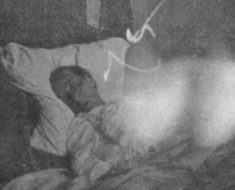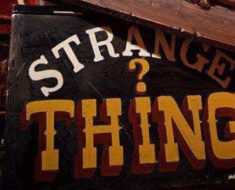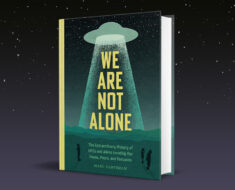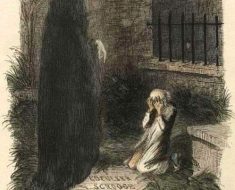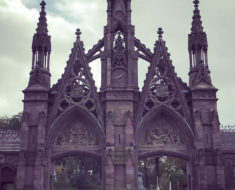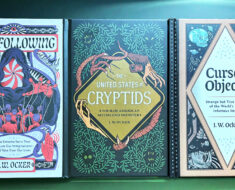In 1948, the Chicago Daily Tribune famously printed the erroneous headline “Dewey Defeats Truman.” All the polls, newspaper writers, and even Democrats had expected it to be the truth before the final vote was tallied. However, tucked away in a small, red stable in Richmond, Virginia, a horse disagreed.
Known as Lady Wonder, the mare’s early prediction of Truman’s victory was just one of many accurate prophecies made by this allegedly psychic animal. Her talents were put to use daily, from noon to three, for more than thirty years, answering questions from more than 150,000 people. Of history’s many educated horses, Lady Wonder was valedictorian.
![Lady Wonder: sign by Anonymous [Public domain], via Wikimedia Commons](http://www.weirdhistorian.com/wp-content/uploads/2017/04/Lady_Wonder_sign-By-Anonymous-Public-domain-via-Wikimedia-Commons.png)
Lady Wonder: sign by Anonymous [Public domain], via Wikimedia Commons
Separated from other horses, she only found company with Fonda and twenty-six blocks marked with letters of the alphabet. Within months, Lady could identify each letter with ease. As her training continued, it became quite evident that this was no ordinary horse. Even children who played with Lady in the pasture noticed she was different—they would hide a thimble from her, but she would always find it.
After a year, she began running toward Fonda just before the trainer would shout “Yoohoo!” Other commands seemed to be obeyed before they could be uttered. Had Lady developed a sixth sense?
Whatever power Lady seemed to have, Fonda allowed her to exhibit it using the blocks to spell out answers. News of Lady’s powers spread, and by 1927 the mind-reading mare had gained fame throughout Richmond and around the country. Lady had become such an attraction that the city council voted to label her an educated horse rather than a fortune teller, saving Fonda a $1,000 yearly fee and allowing business and tourism to continue.
According to a journalist witnessing a session in the late 1920s, when Lady moved the blocks she appeared to be going to sleep, with drooping eyelids, as if she was in a trance-like state. After a reading, she would become tense and nervous, more in line with her racehorse heritage. During this particular performance, Lady presented simple tricks, such as arithmetic and spelling—demonstrated by educated horses before her—but she proved more extraordinary by accomplishing feats beyond general knowledge. She read the date from a coin pulled from the pocket of a spectator, when only he saw the face. Another visitor turned the hands of a clock to 6:10, put the face of the clock against Lady’s body, and asked what time it read. “6-1-0,” Lady responded. “If there was a trick in the uncanny behavior of the animal, the mantle of Houdini had fallen on competent shoulders,” the journalist wrote.
Like a growing child, young Lady outgrew the blocks, so Fonda had a special typewriter built, with snout-sized keys. At each press, a letter popped up facing the audience. Fonda would rearrange the letters before each reading, adding another layer of difficulty to her feats. If trickery were involved, this would make it that much more extraordinary.
![Lady Wonder - By Francis Wickware (Dr. Rhine and ESP. Life Magazine. April. 15, 1940) [Public domain], via Wikimedia Commons](http://www.weirdhistorian.com/wp-content/uploads/2017/04/Lady_Wonder_Horse-By-Francis-Wickware-Dr.-Rhine-and-ESP.-Life-Magazine.-April.-15-1940-Public-domain-via-Wikimedia-Commons.png)
Lady Wonder – By Francis Wickware (Dr. Rhine and ESP. Life Magazine. April. 15, 1940) [Public domain], via Wikimedia Commons
It seems Lady’s influence on politics extended far beyond predicting election outcomes, but then, politicians weren’t the only public servants heeding Lady’s advice. In 1951 the police in Quincy, Massachusetts were without a clue in their search for a missing boy. Lady was consulted and suggested Pittsfield Water Wheel. This was interpreted as the Pit Field Wilde Water quarry, where the boy’s body was soon found. A similar instance occurred in Napierville, Illinois, when two missing boys were predicted by Lady to be found in a river near their home. Though the river had been previously searched, the bodies were eventually found there several months later.
Lady Wonder appeared to have a strong rapport with her fellow four-legged creatures. Once she reportedly chose twenty-eight out of twenty-eight winning horses at Baltimore’s Pimlico Race Course (most famous for hosting the Preakness Stakes). Another story recounts her finding a lost dog, thought to be dead. Its owner, New York psychologist, Thomas L. Garrett, had exposed many mind-reading and fortune-telling acts around the country during his career. Lady was an exception. When she told him his dog, Mickey, was alive in Florida, he discovered that the Long Island kennel that claimed the dog died had faked the hound’s grave and sold him for a profit through its Florida branch. Garrett called Lady “a genuine phenomenon.”
This “genuine phenomenon” attracted scientists and magicians seeking to learn just how genuine she was. Among them was Professor Joseph Banks Rhine of Duke University, a pioneer of parapsychology. His interest in the paranormal developed after hearing a lecture on spiritualism given by Sherlock Holmes creator, Arthur Conan Doyle. “The mere possibility of communicating with the dead is the most exhilarating thought I had had in years,” he later wrote. Rhine began his studies primarily using students as subjects. Eventually he would invent the term “extrasensory perception” and found Duke’s parapsychology lab, the Journal of Parapsychology, and the Foundation for Research on the Nature of Man.
![Lady Wonder with Mrs. Fonda - by Anonymous [Public domain], via Wikimedia Commons](http://www.weirdhistorian.com/wp-content/uploads/2017/04/Lady_Wonder_with_Mrs_Fonda-By-Anonymous-Public-domain-via-Wikimedia-Commons.png)
Lady Wonder with Mrs. Fonda – by Anonymous [Public domain], via Wikimedia Commons
Rhine increased the difficulty of his tests by blindfolding the horse, which quickly stripped away some of Lady’s wonder, as she gave only four of eleven correct answers. When Fonda didn’t know the answer, Lady was zero for five. What she knew, Lady could know.
Despite the evidence Rhine collected, his published findings in the Journal of Abnormal and Social Psychology stated that Lady Wonder seemed responsive to telepathy and possessed a degree of psychic power. However, Rhine did conclude that she didn’t possess independent thinking because she could only give a correct answer if someone else in the room knew the answer.
Not one to believe in magic, Milbourne Christopher, one of America’s foremost illusionists at the time, also looked into Lady’s psychic powers. During a visit in 1956, calling himself John Banks, he asked Lady his name. Not seeing through the deception, Lady typed out “B-A-N-K-S”. After failing that initial test, Christopher attempted another involving a pencil and a pad of paper to determine if Fonda would employ a trick called “pencil reading”, in which the magician follows the motion of the pencil to read what’s been written. He made the motions of writing a 9, but actually only wrote a 1. Once again, Lady failed by typing “9”. Christopher believed that very subtle cues from the trainer were responsible for the phenomenon.
While Christopher’s conclusion seems the most rational, it doesn’t explain how Lady picked winning racehorses, predicted political victories, or found missing children. Lady was also said to be able to locate oil wells and forecast the stock market. Could Fonda have guessed accurately on a consistent basis, besting the law of averages? Were broad guesses simply interpreted as spectators wished them to be? Or were the reported predictions mere exaggerations? The unknown has allowed Lady Wonder to live up to her name in one sense or the other.
The mind-reading mare once predicted her own death at age thirty. She was close, passing on March 19, 1957 at the age of thirty-three. Lady Wonder is buried at a Richmond pet cemetery nestled away in a residential area with two thousand other animals. Mrs. Fonda went into seclusion following her prized horse’s death. Her house and Lady’s stable have since been destroyed to build an interstate. Perhaps Fonda had been forewarned of the construction, making her disappearance a necessity.

